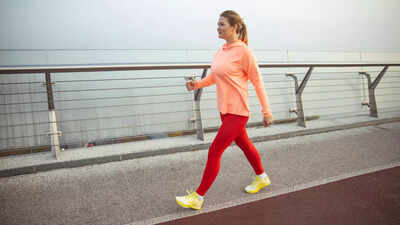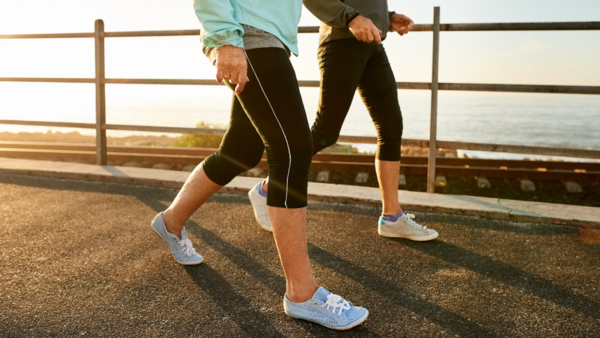5 simple tips to upgrade a daily stroll into “power walking” that can burn more calories |

[ad_1]
Regular exercise is essential for a healthy life. But staying active doesn’t always have to mean intense workouts or complicated routines. Even something as simple as walking can provide you with health benefits and keep diseases at bay. Walking is linked to decreased risk of chronic diseases, including heart disease, stroke, and several cancers. While your normal walking may still have health benefits, adding a few simple tweaks can actually transform it into something even better. Ready to upgrade your normal walking routine to the next level? Here are five simple tips to transform your daily stroll into power walking.Interval walking

One of the simplest ways to boost the benefits of walking is to work on he speed. Instead of maintaining a steady pace, try to mix and match. Yes, that’s right. Try to incorporate intervals of fast walking, followed by slower recovery periods. This is known as interval walking. It is also known as Japanese interval walking. This technique combines short bursts of intensity with rest, which means, three minutes of high-intensity walking (done at a pace where talking is possible but challenging) with three minutes of low-intensity walking (where conversation remains comfortable). This six-minute cycle is repeated for at least 30 minutes, four times per week.A 2012 study conducted in adults with type 2 diabetes, for a period of four months, looked at how three minutes of fast walking with three minutes of walking at a moderate pace impacted the glycemic control, body composition, and physical fitness. They found that people who did interval walking had significant improvement in blood sugar and fitness levels compared to those who walked at a steady pace. The researchers also observed that this walking technique was linked to decreased body fat and better overall physical endurance. You can also burn more calories this way. Increase the pace

Brisk walking is better than your normal stroll. Similarly, the greater the speed, the greater the health benefits. Walking at a greater speed not only helps to reach your destination earlier but is also linked to better health benefits. A 2018 study analyzed data from over 50,000 walkers and found that those who walked at a pace of at least five kilometres (about three miles) per hour had a reduced risk of death from any cause, including cardiovascular disease and cancer. Studies have also found that increasing the walking speed can improve heart health and aid weight management. However, if you have any underlying diseases, walking at a high pace may bring more harm than good. So, consult a doctor before stepping up the pace. Add some weightUnlike in life, carrying extra weight on a walk actually does you good. This can increase the intensity of the workout. You can opt for a weighted vest or backpack to add weight. By simply adding some weight, the muscles will work harder, and will help with burning more calories, and boost strength. A 2006 study looked at how oxygen consumption, relative exercise intensity, vertical ground reaction forces (VGRF), and loading rate (LR) were affected while using a weighted vest (WV) during treadmill walking. The researchers found that adding a weighted vest can increase the metabolic costs, relative exercise intensity, and loading of the skeletal system during walking.You can start with lightweight and slowly build up the weight. Start with 5% of your body weight, and then gradually increase the weight. Also, make sure to maintain good posture and evenly distribute the weight. Stairs and peaks
You can enhance your walking by opting for inclines. Go on a hike. Walking uphill can boost the benefits. If there are no hills, you can add stairs. Climbing the stairs will engage muscles, especially the ones in your legs and glutes, when compared to walking on flat terrain. This simple tweak can significantly improve your simple stroll and burn more calories.
Good posture matters

Image credits: Getty Images
People tend to slouch when they go walking. Older adults, especially, do not focus much on posture. It is important to understand that good posture is the foundation of effective power walking. Stand tall, keep your shoulders relaxed, not hunched. Your back should be straight, and your abdominal muscles gently pulled in. This will engage the core. Keep your head up and your chin parallel to the ground. Instead of looking at your feet while walking, your gaze should be forward. A good posture also prevents injury and helps you breathe more efficiently by opening up your chest.
[ad_2]
Source link







